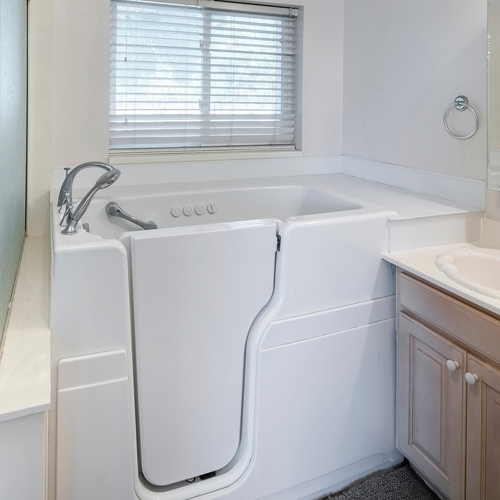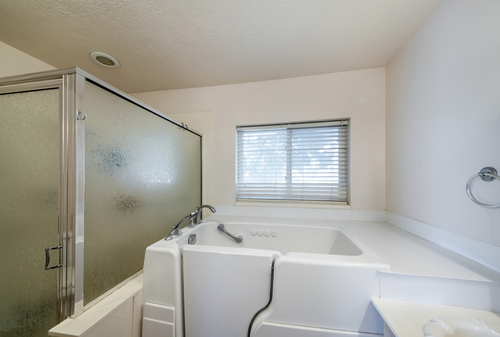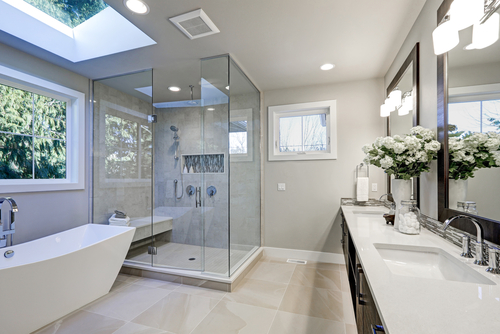For many individuals, bathing is not just a routine task but a cherished opportunity for relaxation and rejuvenation. However, for those with mobility challenges or limited mobility, traditional bathtubs can pose significant barriers to safety and accessibility. Enter walk-in tubs – innovative fixtures designed to provide a safe and comfortable bathing experience for people of all ages and abilities. In this article, we’ll explore the features, benefits, and considerations of walk-in tubs, and how they can enhance the bathing experience for individuals seeking both relaxation and accessibility.
Understanding Walk-In Tubs
Walk-in tubs, as the name suggests, are bathtubs with a watertight door that allows users to enter and exit the tub with ease. Unlike traditional tubs, which typically have a high sidewall that requires stepping over, walk-in tubs feature a low threshold and a wide-opening door, eliminating the need for climbing in and out of the tub. This design not only enhances safety but also provides a more accessible bathing solution for individuals with mobility limitations or disabilities.

Promoting Safety and Independence
One of the primary benefits of walk-in tubs is their focus on safety and accessibility. The low-entry threshold and built-in grab bars provide stability and support for users as they enter and exit the tub, reducing the risk of slips, trips, and falls. Additionally, many walk-in tubs feature non-slip surfaces, contoured seating, and ergonomic controls to further enhance safety and comfort during bathing. For individuals with mobility challenges, walk-in tubs offer a sense of independence and autonomy, allowing them to bathe with confidence and peace of mind.
Therapeutic Features and Relaxation
Beyond safety and accessibility, walk-in tubs also offer a range of therapeutic features designed to promote relaxation and well-being. Many models come equipped with hydrotherapy jets, which deliver massaging streams of water to soothe sore muscles, relieve tension, and improve circulation. Some walk-in tubs also feature air jets, chromotherapy lighting, and aromatherapy systems, creating a spa-like atmosphere that enhances the bathing experience and promotes relaxation and stress relief.
Considerations and Installation
When considering a walk-in tub, it’s essential to evaluate factors such as bathroom layout, plumbing requirements, and accessibility needs. Walk-in tubs come in various sizes and configurations to accommodate different bathroom spaces and user preferences. Additionally, installation may require modifications to existing plumbing and electrical systems, as well as adequate space for maneuvering and access. Consulting with a qualified contractor or bath specialist can help determine the best walk-in tub solution for your needs and ensure a smooth installation process.

Customization Options
Walk-in tubs come with diverse customization options, catering to individual needs and preferences. Users can personalize their bathing experience, adjusting features like water jets and seating configurations to match their specific requirements. This versatility ensures a tailored and comfortable bathing experience, promoting relaxation and well-being. Whether seeking therapeutic massage settings or ergonomic seating arrangements, walk-in tubs empower users to create a bathing environment that meets their unique preferences and enhances their overall bathing experience.
Hygiene and Cleaning Features
Certain walk-in tub models boast advanced hygiene and cleaning capabilities, including self-cleaning systems, ozone sterilization, and antimicrobial surfaces. These cutting-edge features contribute to maintaining optimal cleanliness and hygiene levels, effectively mitigating the risk of bacterial proliferation and ensuring a safe bathing environment. By incorporating these innovative technologies, walk-in tubs offer users peace of mind, knowing that their bathing space is not only luxurious but also hygienic and safe for use.
Accessibility Grants and Financial Assistance
Some regions offer grants or financial assistance programs to aid in covering the expenses of installing walk-in tubs for individuals with mobility challenges or disabilities. Researching available resources and seeking guidance from local authorities can be instrumental in accessing financial support for walk-in tub installations. By exploring these avenues, individuals can alleviate the financial burden associated with acquiring accessibility features like walk-in tubs, making them more accessible to those who need them most.

Long-Term Investment
Although the upfront expense of a walk-in tub might surpass that of a traditional bathtub, it’s crucial to evaluate the long-term advantages and potential savings. Walk-in tubs can augment the value of your property, offering a desirable feature that appeals to potential buyers. Additionally, investing in a walk-in tub may result in savings on medical costs linked to accidents or injuries from slips and falls in the bathroom. By prioritizing safety and accessibility, walk-in tubs provide not only peace of mind but also the potential for financial benefits over time, making them a prudent investment for homeowners.
Warranty and After-Sales Service
When buying a walk-in tub, it’s paramount to investigate the warranty coverage and after-sales service offered by the manufacturer. A robust warranty and dependable customer support guarantee peace of mind and prompt assistance if any concerns arise with the tub. By ensuring comprehensive warranty coverage and responsive customer service, individuals can rest assured that their investment is protected and that any issues will be promptly addressed, enhancing the overall satisfaction and longevity of their walk-in tub experience.
User Reviews and Recommendation
Before finalizing a decision, it’s wise to delve into user reviews and seek recommendations from reliable sources, like healthcare professionals or family members acquainted with walk-in tubs. Drawing from others’ experiences offers invaluable insights, aiding in making an informed choice aligned with personal needs and expectations. By leveraging the wisdom of those who have firsthand experience with walk-in tubs, individuals can navigate the decision-making process with confidence, ensuring the selection of a tub that optimally meets their requirements and enhances their bathing experience.

Conclusion
Walk-in tubs offer a safe, accessible, and luxurious bathing solution for individuals seeking relaxation and independence. With their innovative design, therapeutic features, and focus on safety, walk-in tubs provide a comfortable and enjoyable bathing experience for people of all ages and abilities. Whether you’re looking to improve accessibility in your home or simply enhance your bathing routine, a walk-in tub offers a practical and luxurious solution that can transform your bathroom into a soothing sanctuary of relaxation and well-being.

